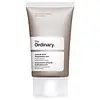What's inside
What's inside
 Key Ingredients
Key Ingredients

 Benefits
Benefits

 Concerns
Concerns

No concerns
 Ingredients Side-by-side
Ingredients Side-by-side

Water
Skin ConditioningButylene Glycol
HumectantAzelaic Acid
BufferingCaprylic/Capric Triglyceride
MaskingBehenyl Alcohol
EmollientDimethicone
EmollientGlyceryl Stearate
EmollientSorbitan Stearate
EmulsifyingPolysorbate 60
EmulsifyingPolyacrylate Crosspolymer-6
Emulsion StabilisingPhenoxyethanol
PreservativePotassium Hydroxide
BufferingPotassium Cetyl Phosphate
EmulsifyingBisabolol
MaskingEthylhexylglycerin
Skin ConditioningTocopheryl Acetate
AntioxidantGlycerin
HumectantO-Cymen-5-Ol
AntimicrobialDisodium EDTA
Beta-Glucan
Skin Conditioning1,2-Hexanediol
Skin ConditioningHydroxyacetophenone
AntioxidantWater, Butylene Glycol, Azelaic Acid, Caprylic/Capric Triglyceride, Behenyl Alcohol, Dimethicone, Glyceryl Stearate, Sorbitan Stearate, Polysorbate 60, Polyacrylate Crosspolymer-6, Phenoxyethanol, Potassium Hydroxide, Potassium Cetyl Phosphate, Bisabolol, Ethylhexylglycerin, Tocopheryl Acetate, Glycerin, O-Cymen-5-Ol, Disodium EDTA, Beta-Glucan, 1,2-Hexanediol, Hydroxyacetophenone
Water
Skin ConditioningIsodecyl Neopentanoate
EmollientDimethicone
EmollientAzelaic Acid
BufferingDimethicone/Bis-Isobutyl PPG-20 Crosspolymer
EmollientDimethyl Isosorbide
SolventHydroxyethyl Acrylate/Sodium Acryloyldimethyl Taurate Copolymer
Emulsion StabilisingPolysilicone-11
Isohexadecane
EmollientTocopherol
AntioxidantTrisodium Ethylenediamine Disuccinate
Isoceteth-20
EmulsifyingPolysorbate 60
EmulsifyingTriethanolamine
BufferingEthoxydiglycol
HumectantPhenoxyethanol
PreservativeChlorphenesin
AntimicrobialWater, Isodecyl Neopentanoate, Dimethicone, Azelaic Acid, Dimethicone/Bis-Isobutyl PPG-20 Crosspolymer, Dimethyl Isosorbide, Hydroxyethyl Acrylate/Sodium Acryloyldimethyl Taurate Copolymer, Polysilicone-11, Isohexadecane, Tocopherol, Trisodium Ethylenediamine Disuccinate, Isoceteth-20, Polysorbate 60, Triethanolamine, Ethoxydiglycol, Phenoxyethanol, Chlorphenesin
 Reviews
Reviews

Ingredients Explained
These ingredients are found in both products.
Ingredients higher up in an ingredient list are typically present in a larger amount.
Azelaic acid is a multitasker ingredient that helps treat acne, pigmentation, and irritation. It is a great option for sensitive skin.
What makes azelaic special?
The best thing about azelaic acid is it's gentleness. It's generally well-tolerated and safe to use alongside other actives like niacinamide or salicylic acid.
Unlike AHAs, azelaic acid will not make you photosensitive/sun sensitive.
You can find this ingredient naturally occurring in grains like wheat, rye, and barley. In cosmetics, azelaic acid is typically lab-made, which is more stable and effective.
Learn more about Azelaic AcidDimethicone is a type of synthetic silicone created from natural materials such as quartz.
What it does:
Dimethicone comes in different viscosities:
Depending on the viscosity, dimethicone has different properties.
Ingredients lists don't always show which type is used, so we recommend reaching out to the brand if you have questions about the viscosity.
This ingredient is unlikely to cause irritation because it does not get absorbed into skin. However, people with silicone allergies should be careful about using this ingredient.
Note: Dimethicone may contribute to pilling. This is because it is not oil or water soluble, so pilling may occur when layered with products. When mixed with heavy oils in a formula, the outcome is also quite greasy.
Learn more about DimethiconePhenoxyethanol is a preservative that has germicide, antimicrobial, and aromatic properties. Studies show that phenoxyethanol can prevent microbial growth. By itself, it has a scent that is similar to that of a rose.
It's often used in formulations along with Caprylyl Glycol to preserve the shelf life of products.
Polysorbate 60 is used to help stabilize products. It is a surfactant and emulsifier. These properties help keep ingredients together in a product. Surfactants help reduce surface tension between ingredients with different states, such as liquids and solids. Emulsifiers help prevent oils and waters from separating.
Polysorbate 60 is sorbitol-based and created from the ethoxylation of sorbitan. Ethoxylation is a chemical reaction used to add ethylene oxide. Sorbitan is a the dehydrated version of sorbitol, a sugar found in fruits.
In this case, the 60 comes from reacting 60 units of ethylene oxide with sorbitan.
Polysorbates are commonly used in medicine and foods.
Learn more about Polysorbate 60Water. It's the most common cosmetic ingredient of all. You'll usually see it at the top of ingredient lists, meaning that it makes up the largest part of the product.
So why is it so popular? Water most often acts as a solvent - this means that it helps dissolve other ingredients into the formulation.
You'll also recognize water as that liquid we all need to stay alive. If you see this, drink a glass of water. Stay hydrated!
Learn more about Water